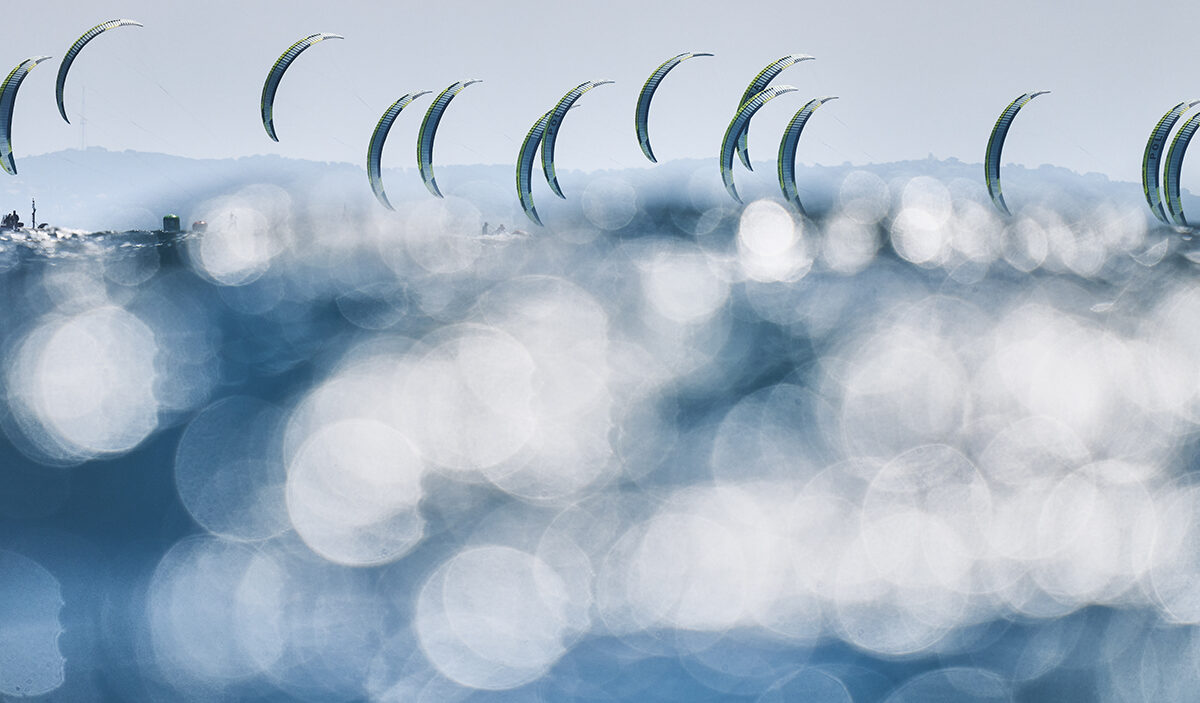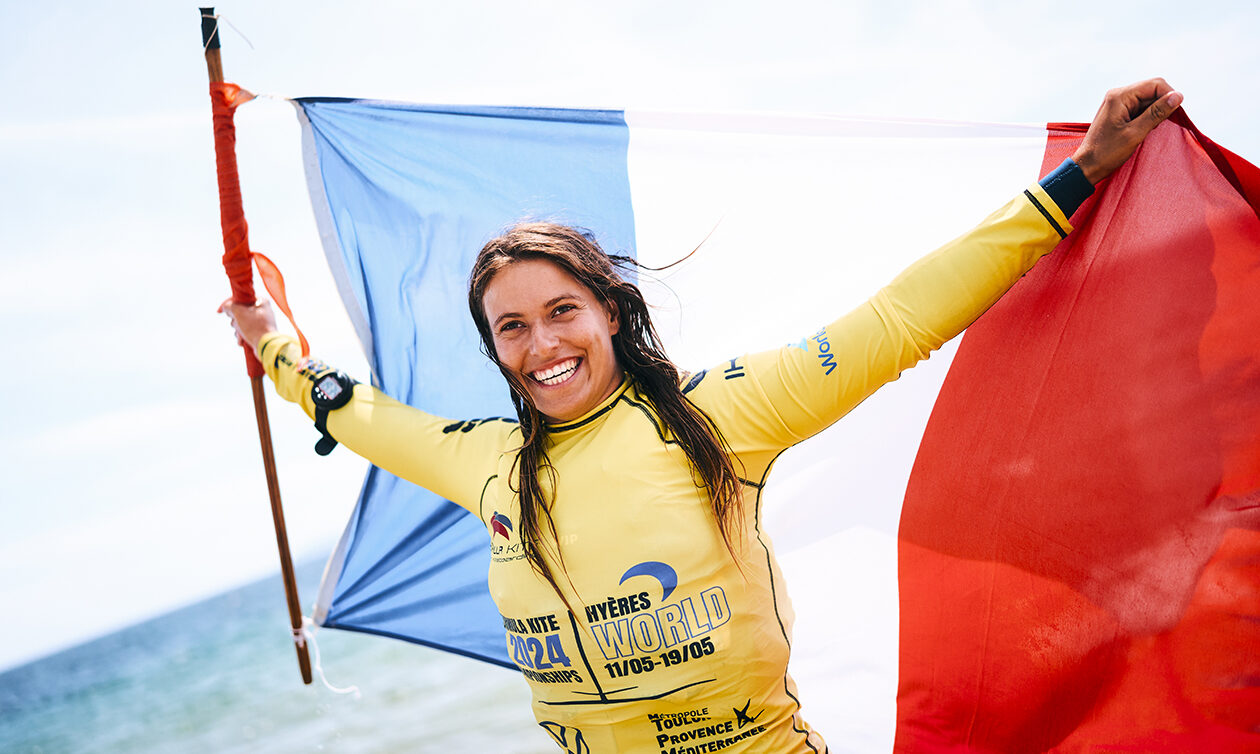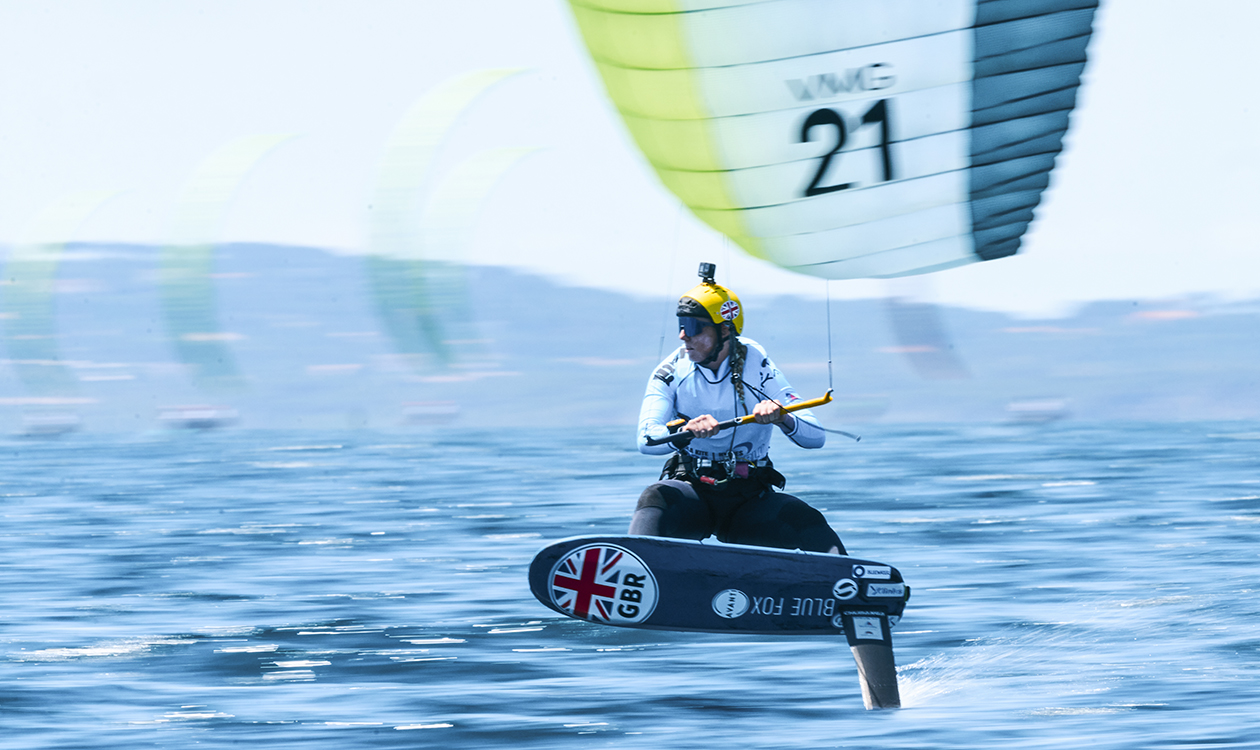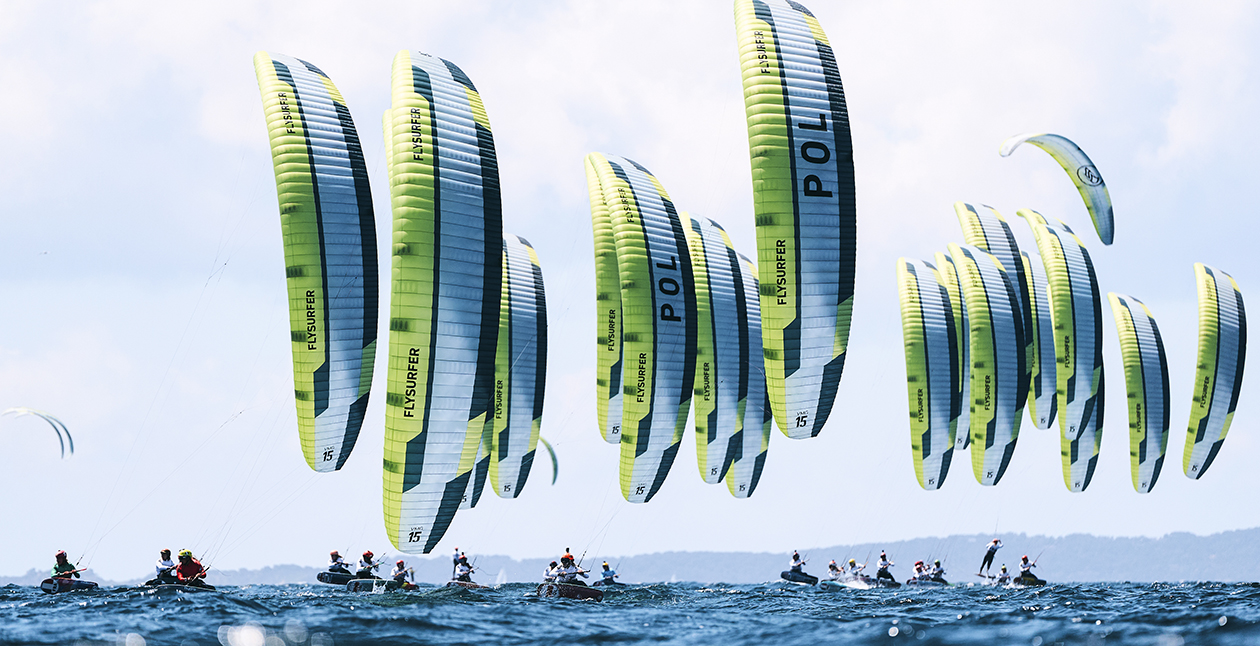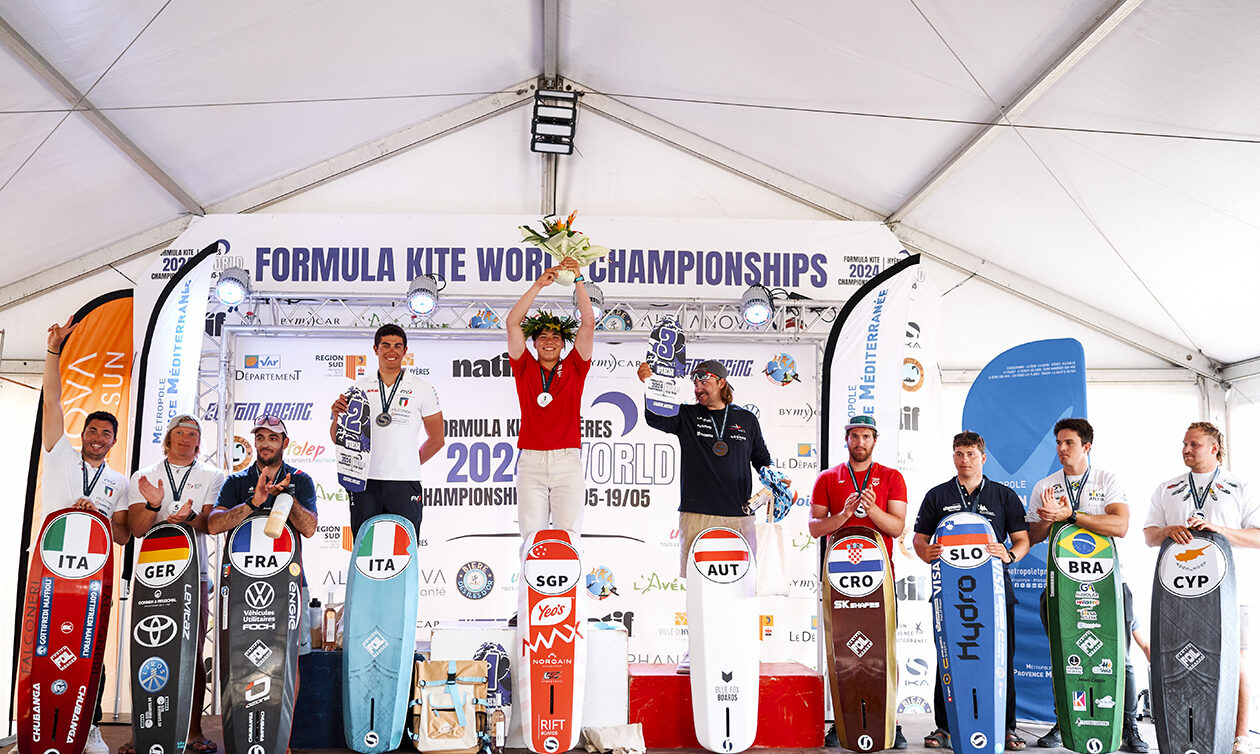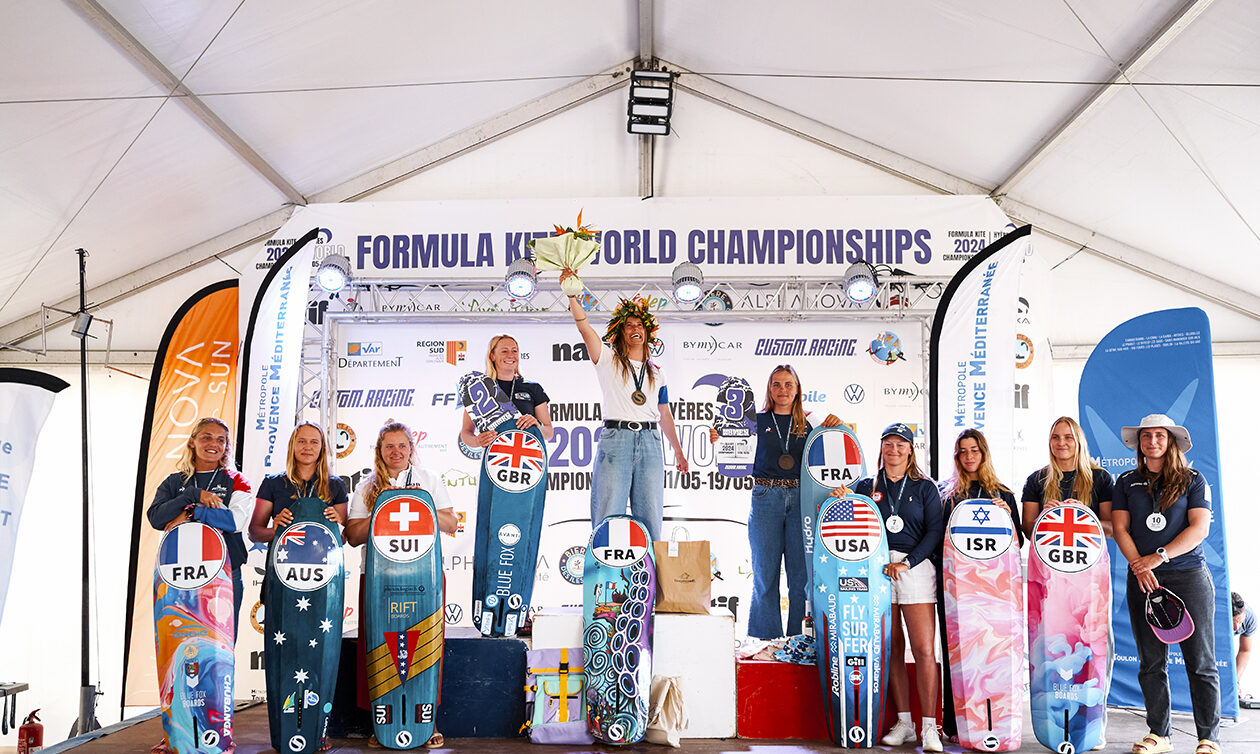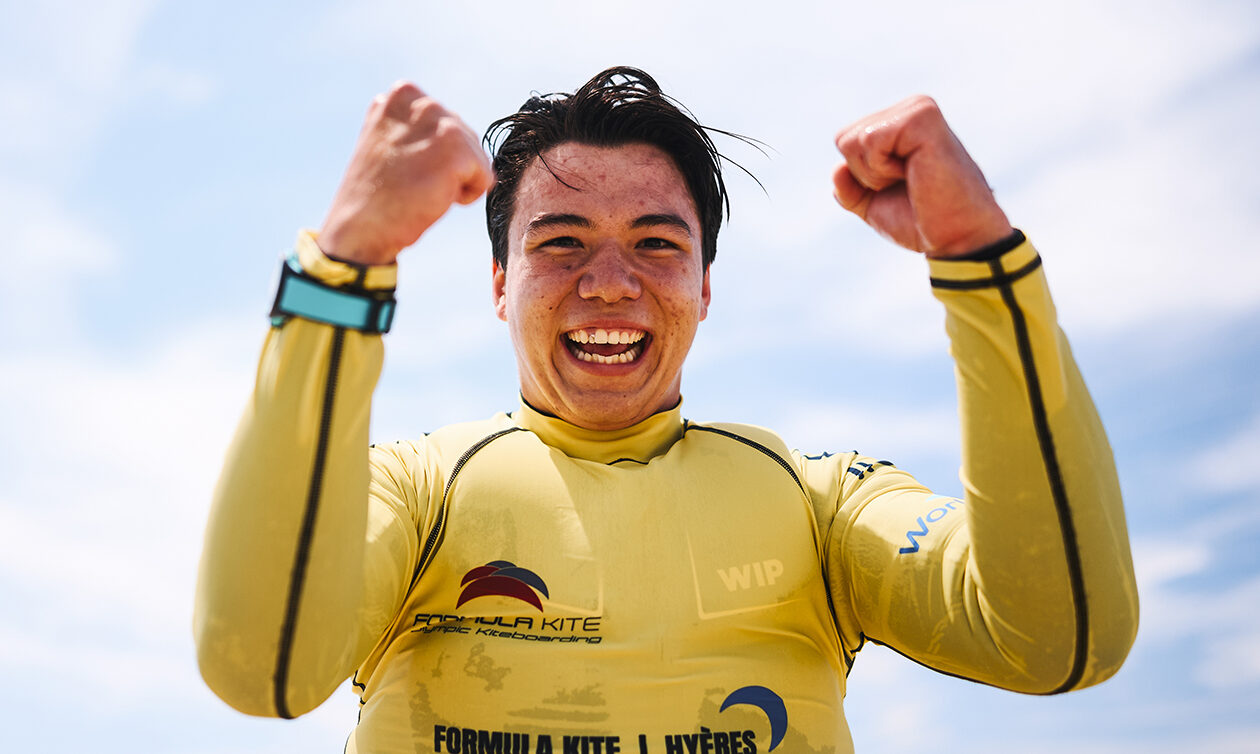As a breed the kiters are not as intense as some of the other Olympic fleets, who can be more serious and more po-faced about what they do. The newer beach sports like kiting and the windsurfers on their foiling iQFOiL boards work hard but also seem to play harder too. As the prospect of Paris 2024 and the Olympic Regatta in Marseille drew ever closer, however, I did wonder if that sense of fun and camaraderie would survive. In most respects the sense of fun is still there, but with a harder edge to it. In October 2022 on the final day of the European Championships in Nafpaktos, Greece, we witnessed a significant moment, a real turning point that would bring a new level of seriousness to the competition. It arose from a fierce battle between France’s Poema Newland and Spain’s Gisela Pulido to determine which of these riders would earn a place in the four-rider final. Following a touch of kites on the start line, Pulido protested Newland for what up until then was considered a minor transgression of the rules. Everyone in the fleet accepted that you let a ‘touch of kites’ go, a live-and-let-live attitude that had everyone rubbing along quite nicely.
But not on that day, not for Pulido. “When we are on the beach we are all friends,” she told me afterwards, fixing me with an unwavering and slightly intimidating stare. “But when you are on the water, in the race, if you can you swim out with a knife in your teeth and you cut their lines, you do it!” She meant this metaphorically, I hasten to add. But it was clear that Pulido had no hesitation in doing whatever she could do to win within the written rules of the game. Newland, her emotions never far below the surface, took a long time to forgive Pulido, who took a lot of heat on social media for playing such a hard game. But it’s inevitable that things were going to move this way, especially when you consider that there’s only one place per nation up for grabs at the Games, as well as the battle for funding from national sports federations. It’s a dog-eat-dog world.
The one-spot-per-nation has been especially hard on the French who have displayed enormous strength in depth. At this year’s European Championships in March, in Mar Menor, Spain, three French women dominated the podium with Jessie Kampman taking bronze, Newland silver, and gold to Lauriane Nolot. As winner of most major events over the past two seasons, including back-to-back world titles, the tall and ever-smiling Nolot has rightly been chosen to represent France on home waters. She goes to Marseille as hot favorite for gold, but if Newland and Kampman had been able to line up alongside Nolot, they could well have blocked out the whole Olympic podium. As it stands, however, Nolot’s strongest threat for gold comes from Great Britain’s ever consistent Ellie Aldridge. Having converted from a conventional sailing background six years ago via the RYA’s highly successful Kite4Gold talent-spotting scheme, Aldridge has turned herself into a regular podium finisher at nearly every major event.
What has become clearer and clearer over the past few seasons is that higher body weight translates to higher speed. One of Nolot’s biggest weapons comes from her straight line speed, capable of traveling higher and faster upwind compared with her rivals. She’s tall and has a body type that is capable of gaining weight, whereas try as the slight Briton might, Aldridge just cannot gain extra body mass despite every effort to stuff herself with calories and put on extra muscle in the gym. It has been a similar body weight challenge for Daniela Moroz of the USA. Up until two seasons ago, Moroz was the standout favorite for winning gold at Paris 2024. Having won six world championships and every event on the international circuit for an unbroken five year period, the rest of the world was working hard to close the gap on the determined American.
Despite still being only 23 years old, Moroz is one of the pioneers of the sport, getting into kiting and kitefoiling in the very early days out on San Francisco Bay with the likes of Johnny Heineken, who has since moved on to wingfoiling. Her raw speed and natural feel, along with a fierce work ethic, carried Moroz a long way for a long time. But even if she’s representing one of the wealthiest nations in the world, minority Olympic sports are poorly supported by US Sailing compared with many of the European nations like France and Great Britain, or even China, Australia or New Zealand. Nolot and Aldridge have become as good as they are because they’ve had to fight their way up to the top of some very strong national squads, while Moroz has had to pretty much do it on her own. Nevertheless, Moroz’s experience should stand her in good stead and she remains a strong prospect for the Olympic podium.
There are plenty of others who could threaten for the women’s podium including Australia’s Breiana Whitehead, Poland’s Julia Damasiewicz or Pulido from Spain. But the one that the leading lights are fearing the most, a recently emerged dark horse, is Switzerland’s Elena Lengwiler. From barely being able to execute a consistent gybe at the start of 2023, the Swiss rider has made huge progress in the past year and a half, finishing fourth at this year’s Europeans and sixth at the Worlds. She’s the heaviest rider in the field and even Nolot fears Lengwiler’s
straight line speed. The reality of Marseille and all the madness of the Games, however, is that it will take more of an all-rounder than a pure speed demon to get to the Olympic podium.

